#bourbon condé
Text

Portrait of Princess Caroline of Hesse-Rheinfels, Duchess of Condé. By Pierre Gobert.
#haus hessen#german aristoccracy#house of hesse#hessen rheinfels#royaume de france#maison de bourbon#bourbon condé#duchesse de bourbon#pierre gobert
10 notes
·
View notes
Text

The Execution of the Duke of Enghien by Jacques Onfroy de Bréville
#duke of enghien#art#jacques onfroy de bréville#napoleonic#napoleonic wars#french#france#royal#royalty#nobility#history#louis antoine de bourbon#house of bourbon#duc d'enghien#prince of condé#job#europe#european#dog#dogs#pug#mohiloff
46 notes
·
View notes
Text












Louis Bourbon - Reign, S02E09
#louis de condé#louis de condé icons#sean teale#sean teale icons#tv series#tv series icons#reign#reign icons#psd icons#icons with psd#actors#actors icons#louis of conde#louis of conde icons#louis de conde#louis de conde icons#louis bourbon#louis bourbon icons#icons#icon#twitter icons#icons without psd
10 notes
·
View notes
Text
"It is something that must be remedied". Dueling, noble privilege, honor, and the authority of the State.
At the Assembly of Notables, the king's friends Marshals La Force and Bassompierre complained that although the noble order had saved Henry IV's throne when the other orders had "deserted" him, now they found themselves pushed unceremoniously out of judicial and financial offices and even the king's council. Louis XIII replied cautiously that he intended to "favor his nobility with all the advantages he could." In the next few months he responded with a mixture of token concessions and severe demands. On the benign side, he tried (in vain) to make nobles engage in ignoble commerce by legalizing it, and he gave them a monopoly of household offices and top military and ecclesiastical posts. On the disciplinary side, he slashed their pensions, added yet another edict against dueling (superseding those of 1623 and 1624), set up a noble commission to authorize the demolition of chateau and town fortifications in the interior of the realm, and made it a capital offense to attack state policies and their authors (i.e., Richelieu) in printed tracts. Richelieu's hand can be seen in both the benign and the harsh sides of these reforms; Louis hand is especially evident in the latter.
The most spectacular example of Louis XIII's reforming action involving the nobility during this period was the execution of Bouteville for dueling. Francois de Montmorency, count of Bouteville, was a member of a distinguished provincial family and had the best connections at court. He embodied the noblest qualities of the fearless warrior in Louis's battles with the Huguenots. Unfortunately, he was also, at age twenty-seven, the champion dueler of France. Richelieu exaggerated only slightly in saying that Bouteville had his hand in every duel in France between 1624 and 1627. Some sort of showdown with Louis XIII was inevitable.
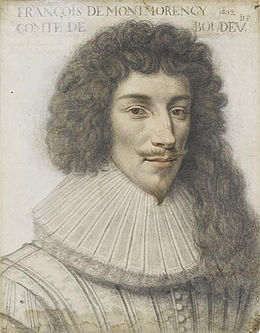
Just before Richelieu's rise to power Louis had tried to enforce an earlier revision of antidueling laws. But Bouteville had fled, and dueling tapered off. It reemerged in 1626. The count was in the thick of the fight, having returned to France just as the old law he had transgressed expired and the new —and more enforceable— edict of February 1626 was being unveiled. Combining the king's determination and his leading minister's ingenuity, the edict of 1626 addressed the pronoble parlementary judges' objection to executing every transgressor of previous laws. Duelers were put on notice that if they dueled or challenged anyone to a duel one on one, they would be stripped of their public posts; if they dueled with seconds —("Three Musketeers"-style) or killed an opponent, they would die. Furthermore, common knowledge alone—rather than virtually unobtainable witnesses, could send a nobleman to the executioner's block.
No one paid any attention. Louis himself seemed ambivalent, for he let his disgraced favorite Barradat off with only banishment from court. Bouteville's case, however, was different from all the rest: he was forever getting involved in elaborate, blood-shedding duels over his honor, even when he tried to run away from them! Just before implementation of the new edict, he engaged in a duel of three against three that ended the lives of two opponents, including yetanother boyhood companion of King Louis. At the beginning of 1627 Bouteville was drawn into yet another duel after his opponent, La Frette, called him a coward for refusing his challenge. A Bouteville second was killed, and the ace dueler promptly fled with his cousin Chapelles to the Spanish Netherlands to escape the new edict's penalties.
Louis XIII unwittingly led Bouteville at long last to his doom by giving the honor-ridden young man a partial pardon that looked like a slight: he would not be prosecuted if he returned to French soil but stayed away from court. Stung by this affront, Bouteville decided to evade no longer the baron of Beuvron, the would-be revenger of his last dueling victim, who had come unsuccessfully all the way to Brussels to challenge him. They fought a multiple duel, in the most public place in Paris Bouteville could think of to uphold his honor against his noble opponent and his royal master —the fashionable Place Royale.
Observers reported the king as being "so offended" that he sent Bassompierre after the fleeing Bouteville and Chapelles with Swiss guards, asked the parlementary prosecutors if the duo could be taken dead or alive, and "expressed great joy" at the news of their capture (while Richelieu and Marillac merely shrugged their shoulders and went on with their work). The instigator of the duel, Beuvron, escaped to England.
As the trial proceeded, Louis managed to keep his emotions in check. When Bouteville's wife, three months pregnant, fell on her knees after mass, the king avoided her, commenting: "The woman brings me pity, but I wish to and must maintain my authority." The condemned man's uncle by marriage, Condé, got nowhere with the typical male noble arguments: "He has failed by error of the custom of your kingdom, which makes honor consist of undertaking perilous actions…. The universal quest for glory, not a personal design to disobey you, drew him into this disobedience."
It is possible that Louis might have been swayed had Richelieu not constantly argued that a test case be made of Bouteville's flagrant defiance of the law. But, as we have seen in our discussion of the royal-ministerial partnership, the minister also made counterarguments for clemency. Richelieu later wrote that he had never been more shaken than by this conflict of values, and by appeals that came from his own family.
After the Parlement had sentenced Chapelles and Bouteville to decapitation, and their opponents to hanging in effigy, Louis armed himself as best he could against the shrieks of Condé's wife and the fainting of Mme de Bouteville. He cited his edicts, conscience, oath, and the blood of his nobility, "for which he had to answer to God." To Charlotte de Montmorency-Condé's cries for mercy he answered: "Their loss moves me as much as you, but my conscience forbids me to pardon them." According to the royal historiographer Bernard, Louis also exclaimed: "It is necessary for a little blood to be shed in this instance to stop the stream that flows daily." Louis XIII insisted that the execution be public, nervously ordered the guards to seize anyone who so much as called for "grace," and had the surrounding streets blocked off with chains and carts.
Bouteville and Chapelles died bravely and repentant for their crimes, dignifying a scene that must have sickened the entire court. Louis himself had to be bled a week later, and immediately fell dangerously ill. Was it worth it? Bernard contended that dueling was lessened, and history has accepted his verdict. In truth, the death on 22 June 1627 of a young nobleman who had killed twenty-two opponents was an exceptional act of state. In contrast to Henry IV and Marie de' Medici, who had condoned the socially acceptable crime of private dueling, Louis XIII simply said that state order was incompatible with flagrant lawless behavior in the name of noble honor.
During the rest of his reign Louis chose carefully where to draw the line. The axe fell on a beloved captain of the king's guards, but spared Protestant and Catholic officers in 1627-28, including Richelieu's cousin, who tried to settle the last of the religious wars by ritual duels. In 1636 Richelieu wrote to Louis that dueling had reappeared, to which the king replied: "It is something that must be remedied."
A. Lloyd Moote - Louis XIII the Just
#xvii#a.lloyd moote#louis xiii the just#louis xiii#cardinal de richelieu#françois de montmorency-bouteville#house of montmorency#michel de marillac#françois de rosmadec comte de chapelles#guy d'harcourt comte de beuvron#élisabeth-angélique de vienne#charlotte-marguerite de montmorency#henri ii de bourbon-condé#dueling#executions#richelieu: sire il est question de couper la gorge aux duels ou de couper la gorge aux lois de votre majesté#also richelieu: i also have strong arguments ready in case you lean for clemency#bouteville: watch me go out in style
12 notes
·
View notes
Photo
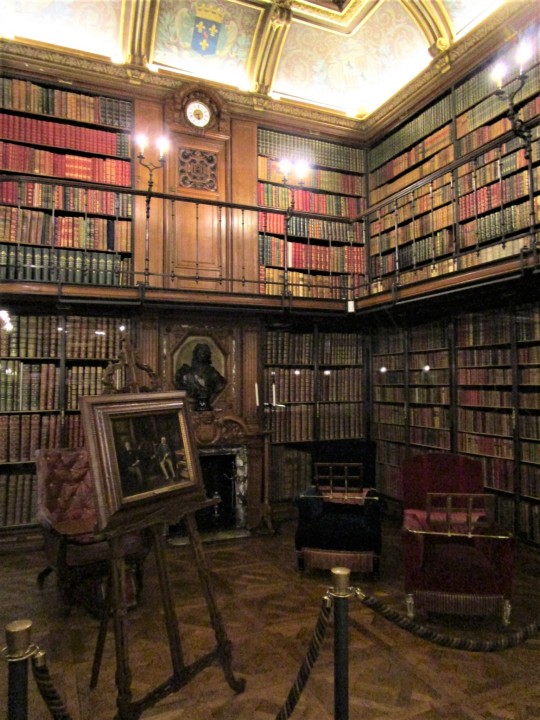


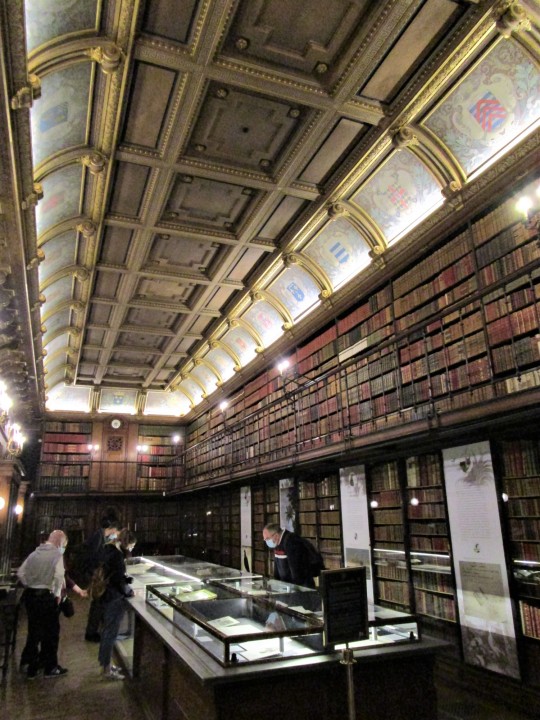
The Reading Room at the Château de Chantilly contains one of the finest collections of rare books and manuscripts in France. It was designed by the architect Honoré Daumet at the end of the 19th century.
Photos by Charles Reeza
69 notes
·
View notes
Note
Hello Bamfsteel. I have been following your blog for over a year now but I realize I haven't commented or reblogged much (I kinda avoid online interaction because I'm terrified of accidentally offending someone). But I cannot express how much I love your blog, and admire you for carrying on despite the hate you get from antis. I was already ambivalent about Daemon, but you got me rooting for him... and for Daena, Rohanne, and Aegor, the last of whom in particular is basically unanimously hated by the fandom (hell, one random tvtropes page even called him worse than Aerys the Mad King)!! So I'm grateful for your blog and hope you keep posting.
Anyway, as a fan of both the Blackfyres and Arthuriana, I'm currently planning to write an Arthurian retelling of Daemon I's life and was wondering about how he chose his sigil/heraldry. Twoiaf says that he simply reversed the Targaryen colors because that's what all bastards do. But I don't know if there are any other examples of this happening in canon.
On the contrary, I recall Jon saying to Arya in AGoT: "Girls get the arms but not the swords. Bastards get the swords but not the arms. I did not make the rules, little sister."
So now I wonder if the 'black dragon on a red field' was actually Daena's personal coat of arms, and Daemon simply chose it after Aegon's acknowledgement as a symbol of defiance and loyalty to his beloved mother. I love the notion that the chivalrous-to-the-last-breath Daemon Blackfyre didn't care all that much for his terrible and blatantly unchivalrous 'father' and instead everything he did, from winning the squires tourney to rebelling against Daeron, was his way of making his mother proud and atoning for all the humiliation she had to suffer due to his birth.
Sorry for the long ask. I am just excited to meet a fellow Blackfyre fan :)
Hello, thesupercat. Thank you for the long ask, and putting up with my slow responses over the past year. I have a little more free time/motivation to write recently, so I’m trying to answer more questions. I’m glad that my posts could bring your fandom experience some happiness. If you ever write the Arthuriana about Daemon I, don’t be afraid to send me a link.
TWOIAF and Dunk actually have different origins of the Black Dragon sigil; Dunk claims “the arms of House Targaryen had borne a three-headed dragon, red on black. Daemon the Pretender had reversed those colors on his own banners, as many bastards did.” (The Sworn Sword) but TWOIAF actually says “Reversing the colors of the traditional Targaryen arms to show a black dragon on a red field, the rebels declared for Princess Daena's bastard son Daemon Blackfyre, First of His Name, proclaiming him the eldest true son of King Aegon IV, and his half brother Darren the bastard.” (TWOIAF Darren II) What a lot of antis miss in their analysis of Daemon and Aegor is conflating their actions with that of what the Reds said their supporters did (if Daemon didn’t create the sigil, it could be evidence that the rebellion wasn’t premeditated, which I believe) I actually had an interesting debate about which version of the origin of the sigil was more logical with someone (I’d taken Dunk’s word to be true), but it’s actually more interesting if the rebels came up with it, because you’re right (no matter what the wiki has to say about it) the reversed sigil color scheme alone doesn’t actually indicate illegitimate origin: it requires that and a diagonal (usually red) slash, called in heraldry a “bend sinister” (which was used in real life illegitimate sigils, like the cadet branches of the House of Bourbon, Conti and Condé). There are multiple examples of illegitimate sons/their descendants using the reversed colors of their father’s house and the bend sinister: Walder Rivers and Walder of Woodmere (a silver castle on a blue field and a red bend sinister, for Frey), and the cadet branch houses Oldflowers (ten white hands on a green field and a red bend sinister, for Gardner), Vikary (quartered with a white lion on red crossed by a gold bend sinister, for Reyne), and Bolling (quartered with a gold stag on a black field and an orange bend sinister, for Durrandon). The other illegitimate children whose sigils are described are variations on a family sigil without the inverse colors (Aegor Rivers, Brynden Rivers) or something completely different (Benedict Justman, Blackshield). Far from being a simple sigil that marks being illegitimate Targaryen, the black-dragon-on-red-field is a symbol of anti-Targaryen defiance that rejects the “bend sinister” marker for a different lineage of dragon (a cat of a different coat, I guess), which makes a lot of sense if you consider the war was due to disgust at the current Targ regime. Daemon technically had the right to use the Targaryen sigil proper since he was legitimized (look at the Velaryon boys), but I’m certain Da3ron would’ve forbid him because that would be “putting him on princely level” never mind that he is a prince as Daena’s son and Yandel knows this; he might’ve actually used a different style of arms before the First Blackfyre that we don’t know of (same with Aegor, who got the black wings on his Pegasus sigil due to House Blackfyre; I headcanon him using a plain blue field during his youth, for the Riverlands), or even the sigil we know of with the bend sinister (which the rebels removed acclaiming Daemon their legitimate king waging war against an illegitimate usurper; also as a Targaryen bastard, Da3ron could’ve had the same sigil as Daemon which the rebels wouldn’t have wanted). But, you seem to be correct that whoever created the sigil put more thought into it than “reversed color scheme is what all illegitimate children do”.
There are two women described as having personal arms: Rhaenyra Targaryen and Barbrey Dustin, ruling ladies with important family connections. The Targaryen sigil is also often personalized to distinguish between brothers and cousins (Aerion, Prince Daeron, Valarr, Maekar all have variations on dragon position, color, borders, number), though usually not for the king or his heir except in civil war conflicts (both Rhaenyra and her brother Aegon II have variations on the Targaryen sigil. Which I guess makes sense why Daemon’s supporters wanted a separate Blackfyre sigil). Daena was also acclaimed queen by some, and according to a GRRM answer wanted to be queen, so it’s possible she had a variation on the Targaryen sigil as personal arms. It’s interesting that the most popular variation on using house sigils is when the person wants to honor their mother’s family: Harras Harlaw (Serrett peacock), Joffrey/Tommen/Myrcella (Lannister lion, which Jon thinks is overly proud), Cleos Frey (Lannister lion), Benfrey Frey (Rosby chevronnels), both Big and Little Walder (who quarter the Frey castles with sigils of their mother’s and grandmother’s families), and Harry Hardyng (quartering the diamonds of Hardyng with 2 Falcons for his Arryn grandmother and 1 broken wheel for his Waynwood mother) all incorporate their mother’s/grandmother’s family sigils to show their high lineage. Even Rhaenyra Targaryen quartered her two red dragons with the Arryn falcon for her mother and the silver seahorse for her first husband. It’s entirely possible Daena, famous for wearing black during her youth and twice uncrowned, incorporated a black dragon into her personal arms (though I like to think she also incorporated the Velaryon seahorse for her mother’s family, to better differentiate herself from the “usurper branch” of Viserys II), and Daemon accepted the nickname “the Black Dragon” partly to honor her (the connection between them wearing black was one of my earliest hc posts). That Daemon’s descent from Daena is emphasized in the same sentence as his supporters creating the black-dragon-on-red-field banner could be seen as connecting the reversal of “traditional Targ arms” to her, as being “Targaryen on both sides” was used at least in Rhaenyra’s case as a mark of better legitimacy. Tl;dr if you want to say that Daemon’s battle sigil is a black dragon to honor Daena, there’s enough symbolic connections considering other examples of personal/illegitimate arms to make that argument, especially for a fanfic.
I hope you have a good rest of your day. My askbox is always open if you have more questions, though response time may be slow.
18 notes
·
View notes
Text
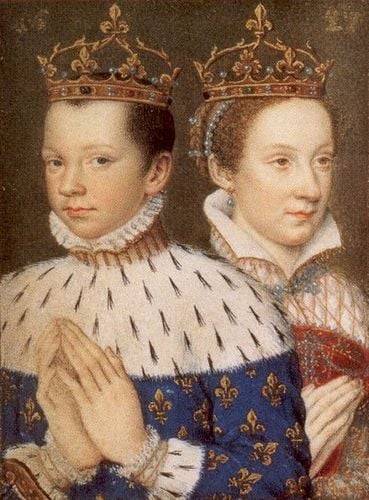
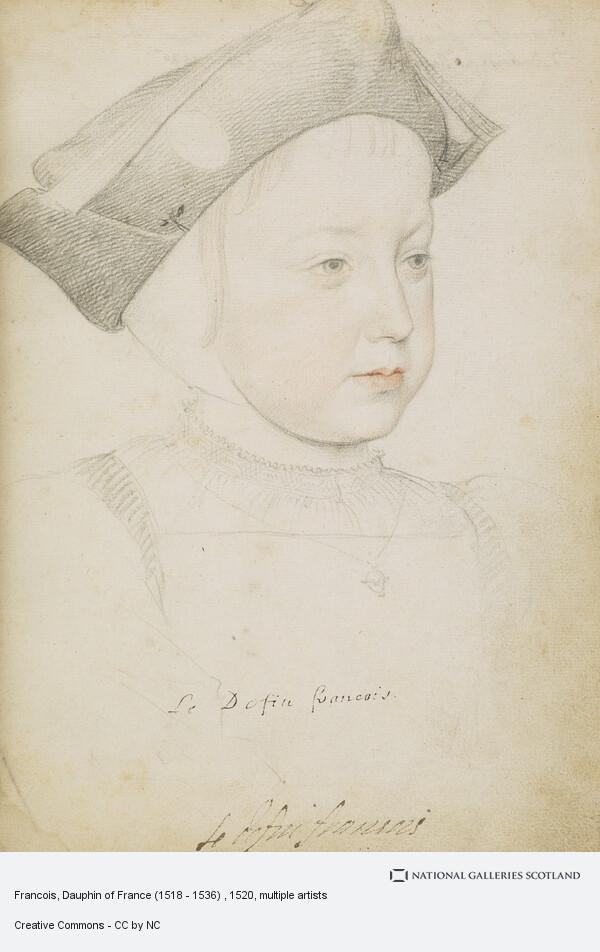

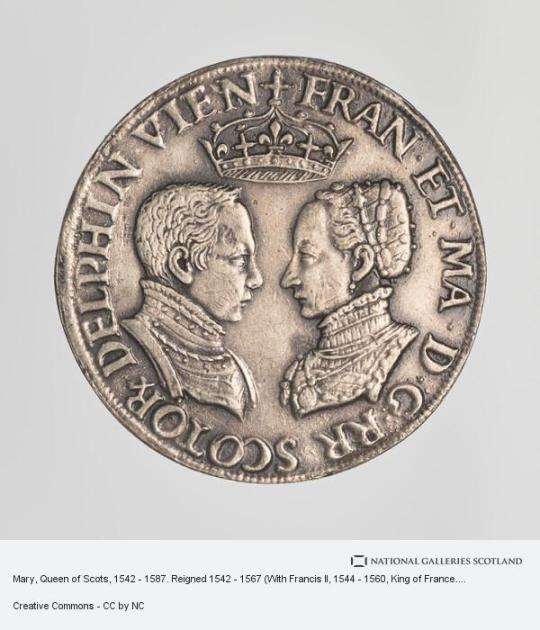
On December 5th 1560 King Francis II of France, the husband of Mary Queen of Scots, died.
Although not crowned it has to be remembered that Francis was also King consort of Scotland.
Francis was born on 19 January 1544, the eldest son of Henry II of France and Catherine de Medici, he was named for his grandfather, King Francis I.
When Francis was four years old, the Scots and French signed the Treaty of Haddington in July 1548 arranging the betrothal of Mary Queen of Scots and the dauphin Francis in return for French aid to expel the invading English. Mary Queen of Scots sailed from Dumbarton for France in the August of 1548 when she was but five years old. The young Queen was accompanied by her four Marys, the daughters of Scottish noble families, Mary Beaton, Mary Seton, Mary Fleming and Mary Livingston.
Mary spent the rest of her childhood at the court of her father-in-law, Henri II Her father-in-law, Henry II of France wrote 'from the very first day they met, my son and she got on as well together as if they had known each other for a long time'. Mary was a pretty child and brought up in the same nursery as her future husband and his siblings, became very attached to him. She corresponded regularly Mary of Guise , who remained in Scotland to rule as regent for her daughter. Much of her early life was spent at Château de Chambord. She was educated at the French court learning French, Latin, Greek, Spanish and Italian and enjoyed falconry, needlework, poetry, prose, horse riding and playing musical instruments.
Mary was the cosseted darling of the French court, the doting Henri II wrote 'The little Queen of Scots is the most perfect child I have ever seen.' He corresponded frequently with Mary of Guise, expressing his delight in his young daughter-in-law. Mary's maternal grandmother, Antoinette of Guise, in a letter to her daughter in Scotland, stated that she found Mary ' very pretty, graceful and self assured.'
Francis and Mary were married with spectacular pageantry and magnificence in the cathedral of Notre Dame, Paris, by the Cardinal Archbishop of Rouen, in the presence of Henry II, Queen Catherine de' Medici and a glittering throng of cardinals and nobles. The French courtier Pierre de Brantôme described Mary as ‘a hundred times more beautiful than a goddess of heaven … her person alone was worth a kingdom.’
Among the wedding guests was one, James Hepburn Earl of Bothwell. Francis was fourteen and Mary fifteen at the time, Francis then held the title King consort of Scotland until his death.
When Henri II was killed during a jousting contest, incidentally by Gabriel de Lorges, Comte de Montgomery, Captain of The Scots Guard, and a descendant of Alexander Montgomerie of Auchterhouse, Mary's young husband Francois ascended the throne. Francis was reported to have found the crown of France so heavy that the nobles were obliged to hold it in place for him.
The young Francis became a tool of Mary's maternal relations, the ambitious Guise family, who seized the chance for power and hoped to crush the Huguenots in France. The Huguenot leader, Louis de Bourbon, prince de Condé plotted the conspiracy of Amboise in March 1560, an abortive coup d'etat in which Huguenots surrounded the Château of Amboise and attempted to seize the King. The conspiracy was savagely put down, and its failure led to increase the power of the Guises. This alarmed the king 's mother, Catherine de Medici, who reacted by attempting to secure the appointment of the moderate Michel de L'Hospital as chancellor.
During the autumn of 1560 François became increasingly ill, and died from the complications of an ear condition, in Orléans, Loiret. Since the marriage had borne no children, the French throne passed to his 10-year-old brother, Charles IX. Mary was said to be grief-stricken Multiple diseases have been suggested as the cause of Francis' death, such as mastoiditis, meningitis, or otitis exacerbated into an abscess. Francis was buried in the Basilica of St Denis.
There was no place for the seventeen year old Mary, Queen of Scots in France, she prepared to return to her native Scotland with an uncertain future that would hold.
16 notes
·
View notes
Photo
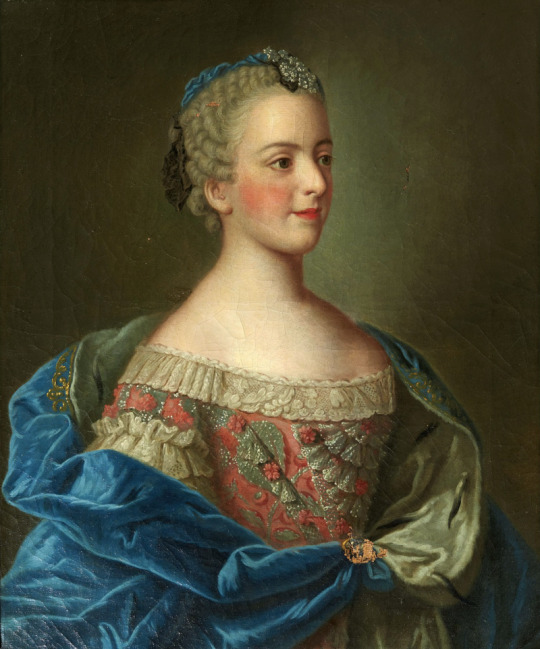
Élisabeth Alexandrine de Bourbon (5 September 1705 – 15 April 1765) was a French princess of the blood and a daughter of Louis III, Prince of Condé. Her father was the grandson of the Grand Condé and her mother, Madame la Duchesse was the eldest surviving daughter of Louis XIV of France and his Maîtresse-en-titre, Madame de Montespan.
65 notes
·
View notes
Text

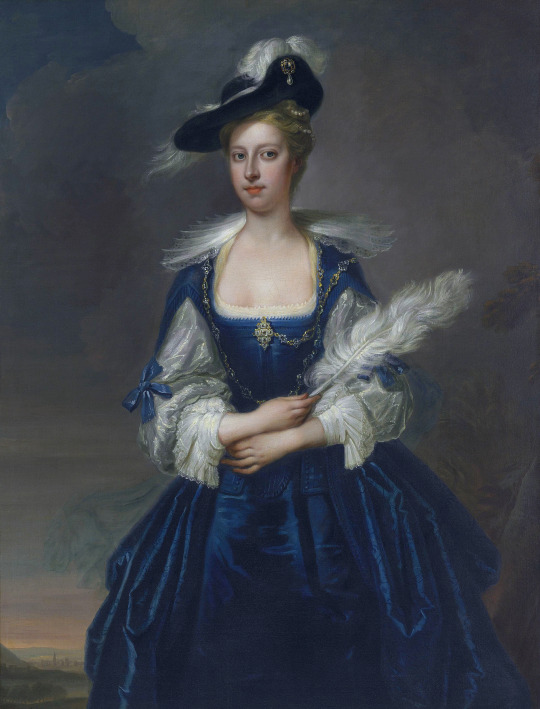
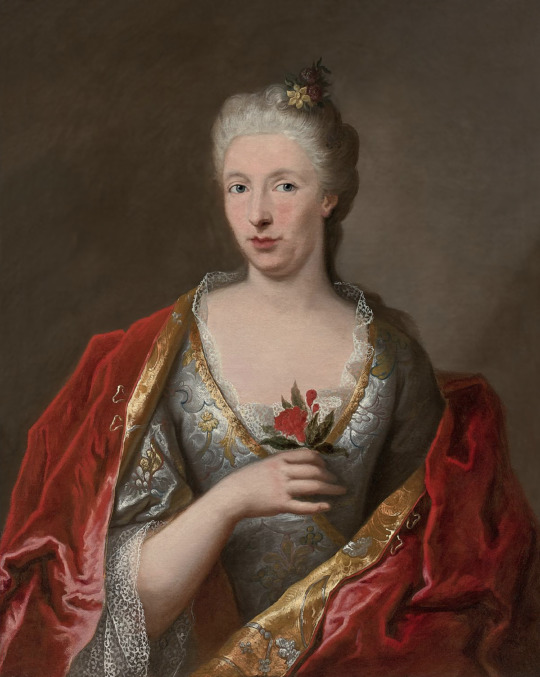
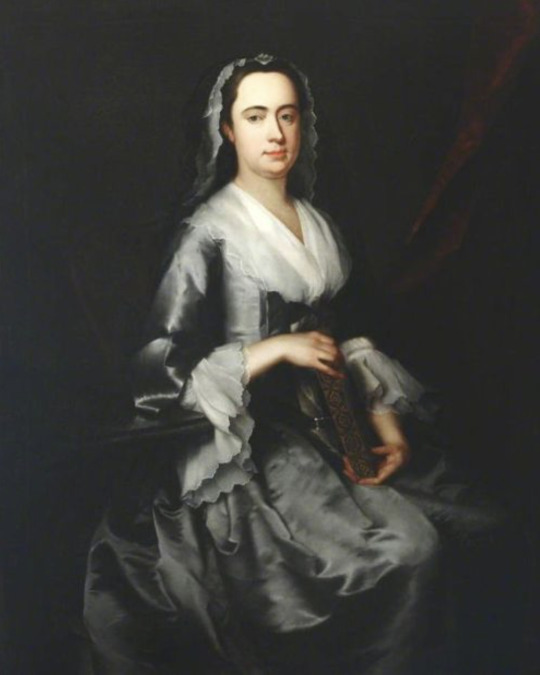
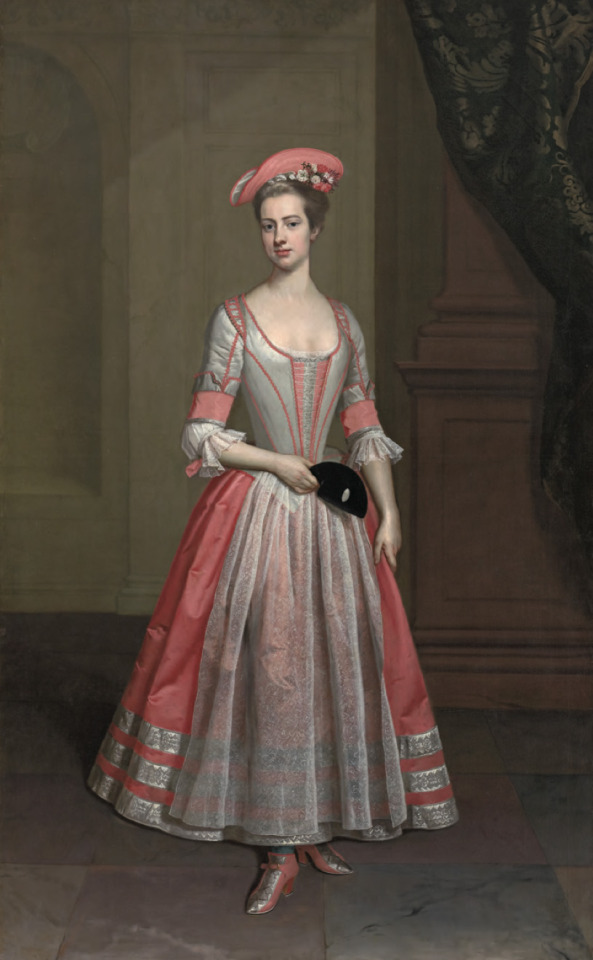
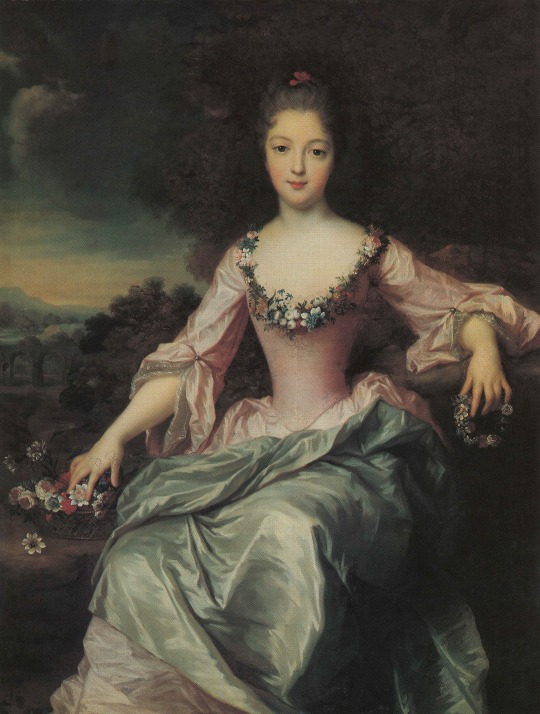

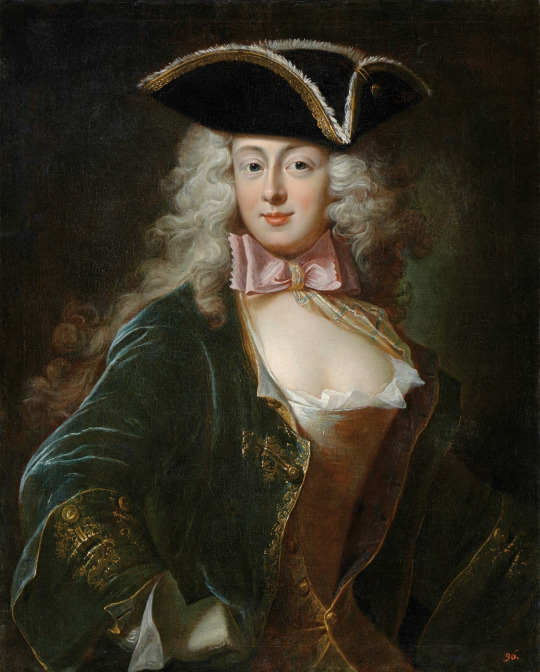

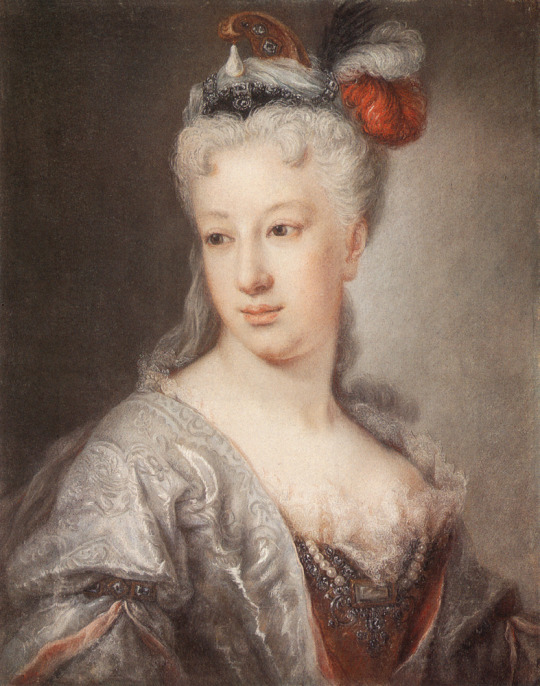

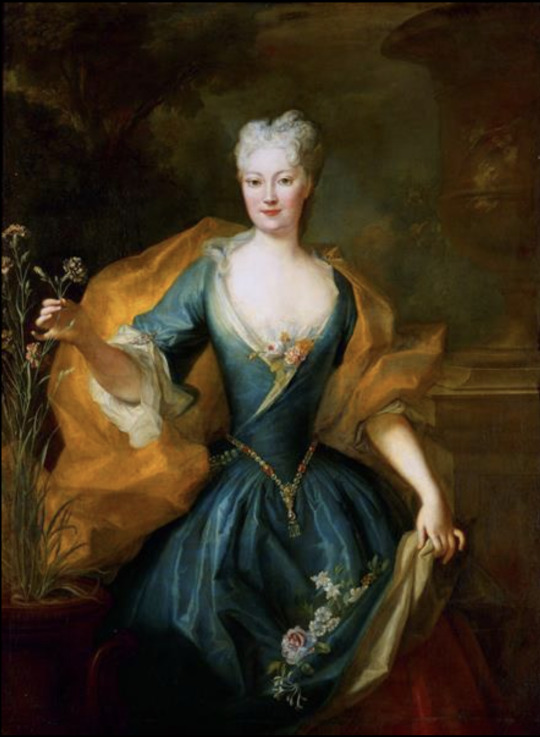

1720s dress -
Top left 1720 (probably) Princess Rakoczi by Nicolas de Largillierre (National Gallery - London, UK); From paintings-art-picture.com/paintings/archives/534/largilliere-nicolas-de-princess-rakoczi; removed spots throughout image and print in lower rt corner 152.0X2000.
Top right ca. 1720 (based on date of marriage) Elizabeth Dunch, later Lady Oxenden, by Thomas Hudson (auctioned by Christie’s). From their Web site; fixed obvious spots w Pshop 2449X3215.
Second row left ca. 1720 Dame dite madame Élisabeth Parisot by entourage of Jean-Baptiste Oudry (on auction by Tajan). From invaluable.com-auction-lot-ecole-francaise-vers-1720-entourage-de-jean-bapti-42-c-20e48bc868; fixed creases w Pshop 2990X3747.
Second row right ca. 1720 Mrs or Miss Mary Miller by the circle of Jonathan Richardson the elder (location ?). From titam.tumblr.com 1228X1536.
Third row ca. 1720 Henrietta Hobart, The Hon. Mrs Howard, later Countess of Suffolk, in a masquerade dress attributed to Thomas Gibson (Blickling Hall - Blickling, Norfolk, UK). From the National Trust's Blickling Hall Illustrated Picture List 816X1321.
Fourth row 1720 Marie Anne de Bourbon Condé by Gustaf Lundberg (auctioned by Nordén Auktioner). Probably from their Web site 3871X5117.
Fifth row 1721 Louise Anne de Bourbon, Mademoiselle de Charolais by Charles Antoine Coypel (location ?). From jeannedepompadour.blogspot.com/2012/03 820X1000.
Sixth rów left 1722 (before) Emerencjanna Pociej née Warszycka by Ádám Mányoki (Pałac Łazienkowski - Warszawa, Poland). From Wikimedia; too many flaws to fix 1608X2000.
Sixth row right 1722 Élisabeth-Charlotte d'Orléans, duchesse de Lorraine, avec son second fils François-Étienne par Alexis Simon Belle (location ?) From www.altesses.eu/princes290.php 823X1188.
Seventh row 1722 Marchesa Maria Guicciardini, née Rinuccini by Giovanna Fratellini (Galleria degli Uffizi - Firenze, Toscana, Italy). From www.pastellists.com; fixed left half of upper edge with Photoshop 787X1000.
Eighth row left 1723 Liselotte von der Pfalz by Hyacinthe Rigaud (auctioned by Tajan). Posted to Foro Dinastias by Minnie on 7 February 2010; removed flaws in background with Photoshop 614X1024.
Eighth row right 1724 Countess Karoline Friederike Lubomirska by Louis de Silvestre (private collection). From the-athenaeum.org 1768X2414.
Ninth row 1724 The Garter by Jean-François de Troy (location ?). From tumblr.com/catherinedefrance fixed obvious spots w Pshop 662X800.
#Princess Rakoczi#sucrcote#V waistline#Nicolas de Largillierre#1720s fashion#Rococo fashion#Louis XV fashion#Georgian fashion#Elizabeth Dunch#Thomas Hudson#ruff#Élisabeth Parisot#Jean-Baptiste Oudry#cross over bodice#Mary Miller#Jonathan Richardson the Elder#fichu#Henrietta Hobart#Thomas Gibson#apron#Marie Anne de Bourbon Condé#Gustaf Lundberg#Basque neckline#notched sleeves#Louise Anne de Bourbon#Charles Antoine Coypel#cap#fan#lace enggageantes#Emerencjanna Pociej
16 notes
·
View notes
Text
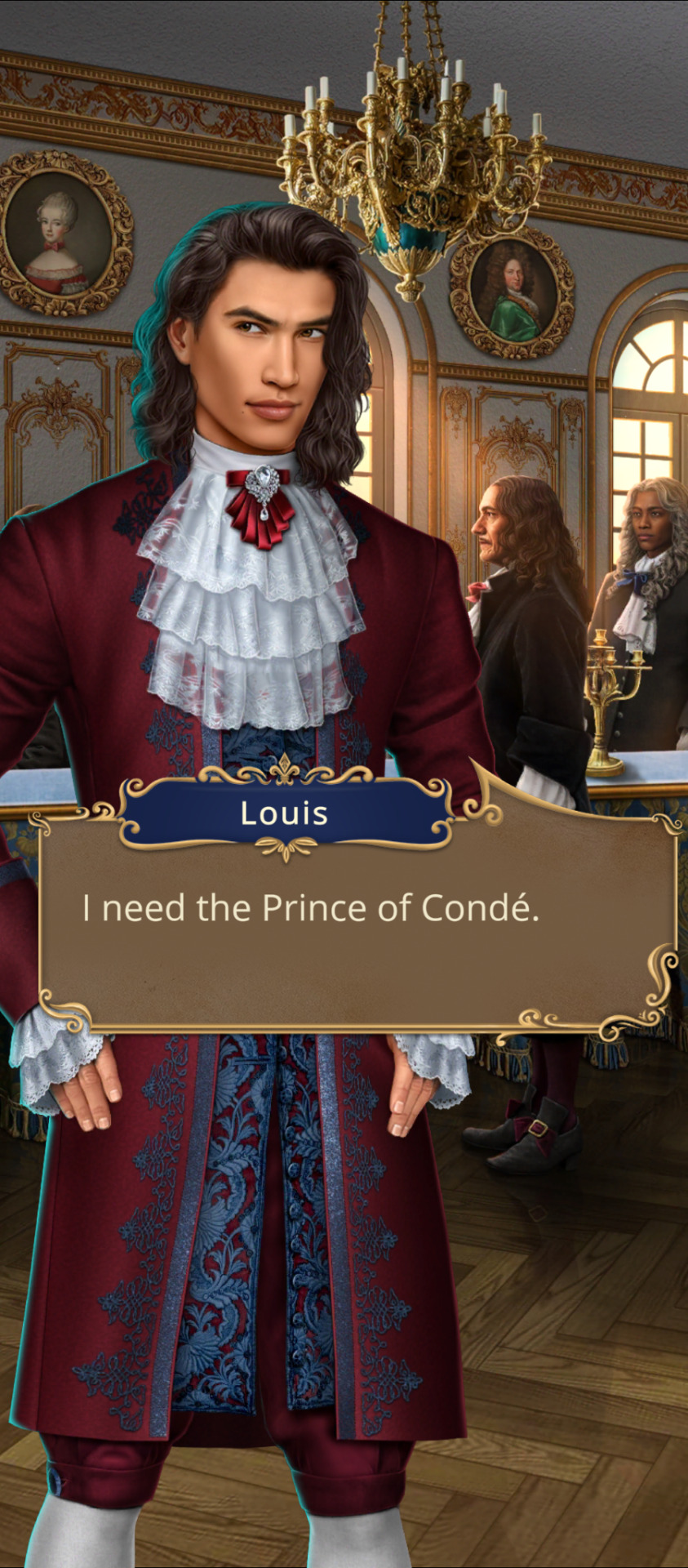
Louis II de Bourbon, Prince of Condé, also known as le Grand Condé (1621–1686), was of the Sun King's pre-eminent generals and is remembered for being a brilliant tactician and strategist.
9 notes
·
View notes
Text

Equestrian Portrait of Louis II de Bourbon, the Grand Condé, as a Boy, Gonzales Coques, between 1643 and 1647
#art#art history#Gonzales Coques#portrait#portrait painting#equestrian portrait#children in art#House of Bourbon#Ancien Regime#Baroque#Baroque art#Flemish Baroque#Flemish art#17th century art#Herzog Anton Ulrich Museum
74 notes
·
View notes
Photo

Louis Antoine de Bourbon, Duke of Enghien (1772—1804) by Charles Rauch.
#Charles Rauch#royaume de france#maison de bourbon#bourbon conde#bourbon condé#louis antoine de bourbon#duc d'enghien
20 notes
·
View notes
Photo

Jean-Marc Nattier (French, 1685 - 1766)
Mademoiselle de Clermont as a Sultana (1697 - 1741), 1733
Little is known of this group portrait showing a seated white female figure, currently identified as Marie-Anne de Bourbon (1697–1741), better known as Mademoiselle de Clermont, and several unidentified Black models. The seated woman at the centre was the youngest child of Louis III de Bourbon, Prince de Condé and of Mademoiselle de Nantes, an illegitimate (though subsequently recognised) daughter of Louis XIV.
The painting aligns with the genre of historicised portraits, that is, representations of actual sitters in a fantasy or allegorical setting. Nattier shows Mademoiselle de Clermont in the guise of a Sultana in a harem, an erotically charged space in the Western imagination.
The painting is an early example of 'Turquerie' — a depiction in an imaginary 'Turkish' vein — that slowly emerged as a new fashion in the years around 1720. This setting provided the artist with an excuse to include Clermont’s exposed lower legs and knees, elements that would have been unacceptable in a formal court portrait. The fantasy setting may also provide some rationale for the presence of the other women in this painting: six Black figures who are grouped around the seated Clermont. As people of colour, such women would not have been typical habitués of the eighteenth-century French court; their presence here thus enhances the exotic mood created by the ‘Turkish’ allusions.
It is also worth noting that the painting was made only a few short decades after the establishment, by Clermont’s ancestor Louis XIV, of the Code Noir. This notorious document codified slavery in the French colonial empire.
#jean marc nattier#different quality and colour#french#france#art#mademoiselle de clermont#fine art#classical art#european art#world history#european history#turkey#germany#england#spain#portugal#denmark#traditional art#french art#french woman#french women#female portrait#female#portrait#brunette#woman#lady#aristocrat#turquerie
22 notes
·
View notes
Text












Louis Bourbon - Reign, S02E22
#louis de condé#louis de condé icons#sean teale#sean teale icons#tv series#tv series icons#reign#reign icons#psd icons#icons with psd#actors#actors icons#louis of conde#louis of conde icons#louis de conde#louis de conde icons#louis bourbon#louis bourbon icons#icons#icon#twitter icons#icons without psd
2 notes
·
View notes
Text
Barbin, Mangot, Luçon
Condé's incarceration intensified the power struggle between two factions equally marred by political self-seeking. The rebels' new rallying cry of avenging their leader's arrest could not overcome their moral bankruptcy as a party aimed at transferring to themselves the power and patronage enjoyed by the queen mother's Italian favorites. On the royal side, the arrest was part of a new state policy of firmly resisting rebel demands. That policy shift stemmed from the appointment during the last months of 1616 of a vigorous ministerial triumvirate: Claude Barbin, Claude Mangot, and Armand-Jean du Plessis, bishop of Luçon. The triumvirs' effectiveness was hampered, however, by popular antipathy toward the couple who had put them in power, Concini and his wife, Galigaï.
Of the three "creatures" of the Ancres, Barbin had the most influence, and eventually suffered most severely from the king's wrath after the royal coup d'état of 1617. A shrewd manipulator of money and people, this private financier had advanced his career by leasing the collection of state fees to the profit of his friend, Leonora Galigaï, then became Marie's personal financial director and finally royal superintendent of finance. Barbin took the lead among the new ministers in boldly urging Marie to oppose princely disorder.
Mangot's background was somewhat less controversial. He had parlayed a brilliant law career and legal assistance to Concino Concini into acquisition of the top post in the Parlement of Bordeaux, then briefly served as a secretary of state, and finally as keeper of the seals, thereby assuming the judicial functions —but not the office itself— of chancellor, which post was always for life.
The minister who signed his name Lusson at this time was the last of the three to enter the council, and owed a great deal of his influence with the queen mother and her Italian favorites to the patronage of Barbin. Armand-Jean du Plessis, sieur de Richelieu, was the ambitious scion on his father's side of the petty noble Richelieu-du Plessis family, which had been prone to dueling and overspending, and on his mother's side of the hardworking La Porte - Meilleraye family of robe lineage. He had already come far as bishop of Lucon, orator of the clergy at the Estates General, almoner of young Queen Anne, and personal secretary to the queen mother. In November 1616, he became secretary of state for foreign affairs.
Sympathetic biographers have read more into the future cardinal-minister Richelieu's brief conciliar career of 1616-17 than the hard evidence proves. All we can say with certainty is that he showed himself to be bright and energetic in internal and external affairs. His surviving letters to Ancre were embarrassingly fawning, even for an era that assumed the way to become a favorite at court and stay there included a large dose of flattery and obsequiousness. Luçon also revealed his driving ambition and authoritarian bent to such an extent that, at his fall in 1617, the keenly observant young Louis XIII expressed relief to be rid of his tyranny.
The triumvirate was able to hold the military edge for the royal side against Condé's followers in the desultory fighting of the last months of 1616 and the beginning of 1617, but without finding a moral cause that would definitively tip the balance in this latest miniwar. To the contrary, the ever-escalating level of the Ancre couple's conspicuous privilege and power undermined everything Barbin was attempting to accomplish, and served also to make the queen mother more vulnerable as the Ancres' patroness.
A. Lloyd Moote- Louis XIII the Just
#xvii#a.lloyd moote#louis xiii the just#henri ii de bourbon-condé#marie de médicis#concino concino#leonora galigaï#claude barbin#claude mangot#cardinal de richelieu#louis xiii#i can't believe he let some letters survive#how embarrassing#now i need to read them#ah#luçon! me voilà débarrassé de votre tyrannie!#court intrigues and coups d'état#barbin trying to put out fires everywhere#something wicked this way comes
3 notes
·
View notes
Text
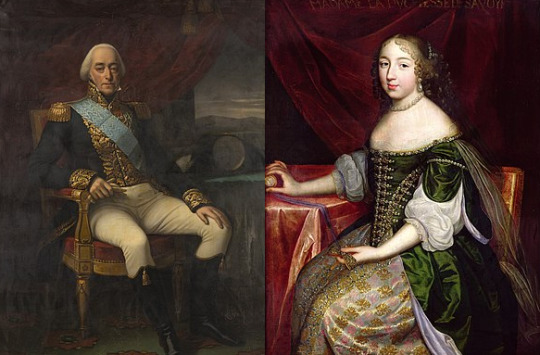
Louis:
Now admittedly this guy didn't do much but first off he abducted from her convent a woman he was already married to and second off his son was assassinated on the orders of Napoleon. Also he's a Bourbon because his grandfather was the son of Louis XIV and Mme de Montespan which is pretty rad too.
Françoise-Madeleine:
Daughter of Gaston d'Orléans and first cousin of Louis XIV, she holds the record of shortest tenancy of the duchy of savoie.
Dates indicated are dates of life.
2 notes
·
View notes